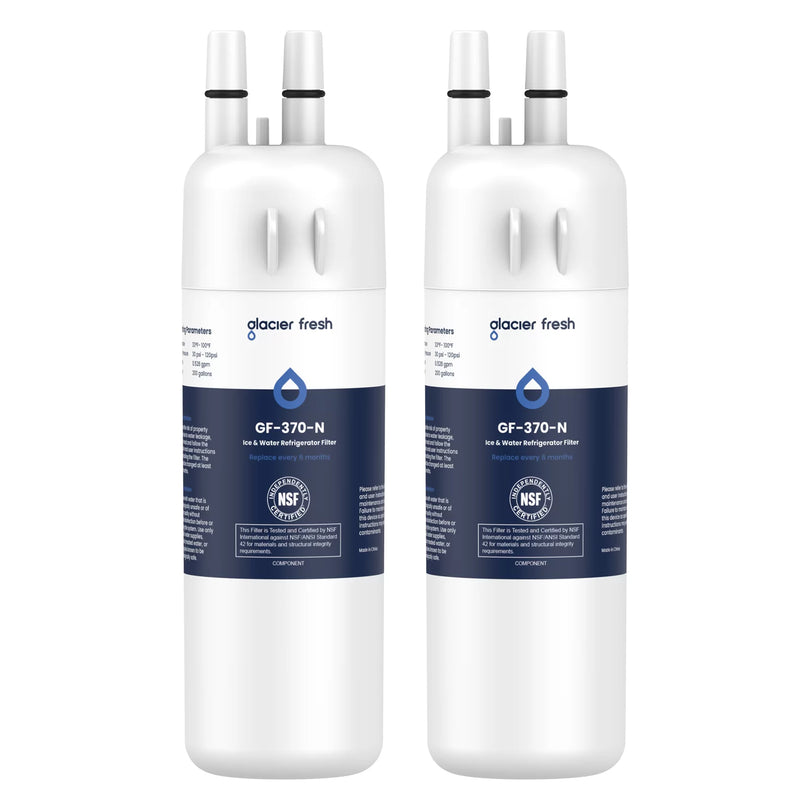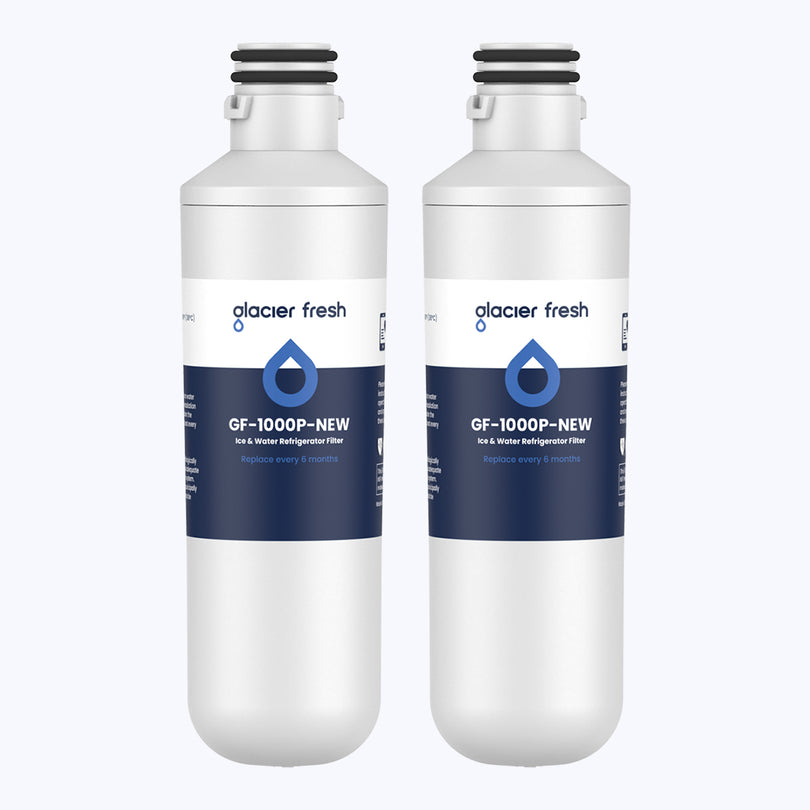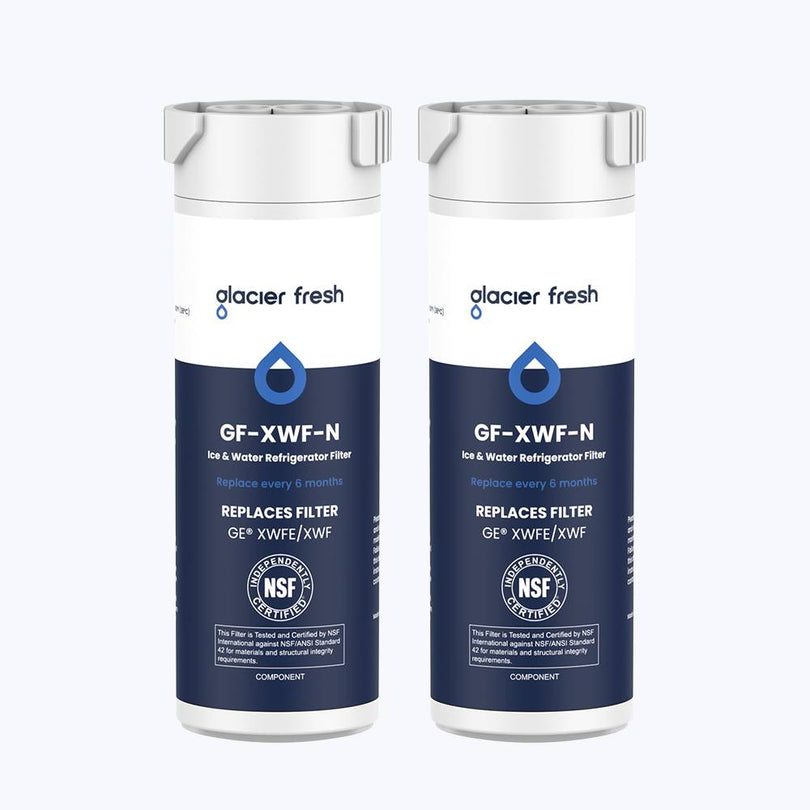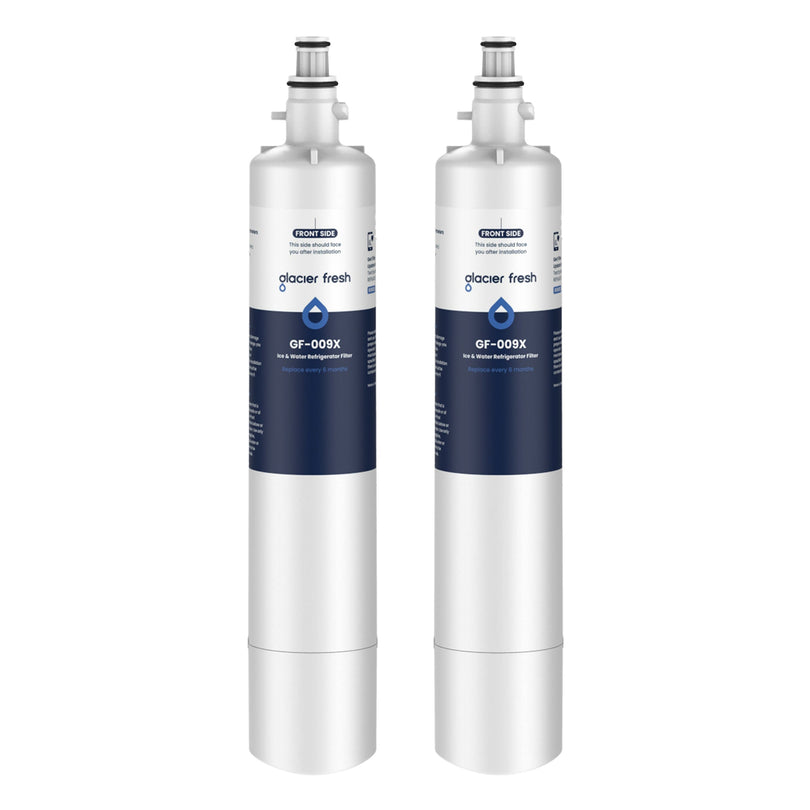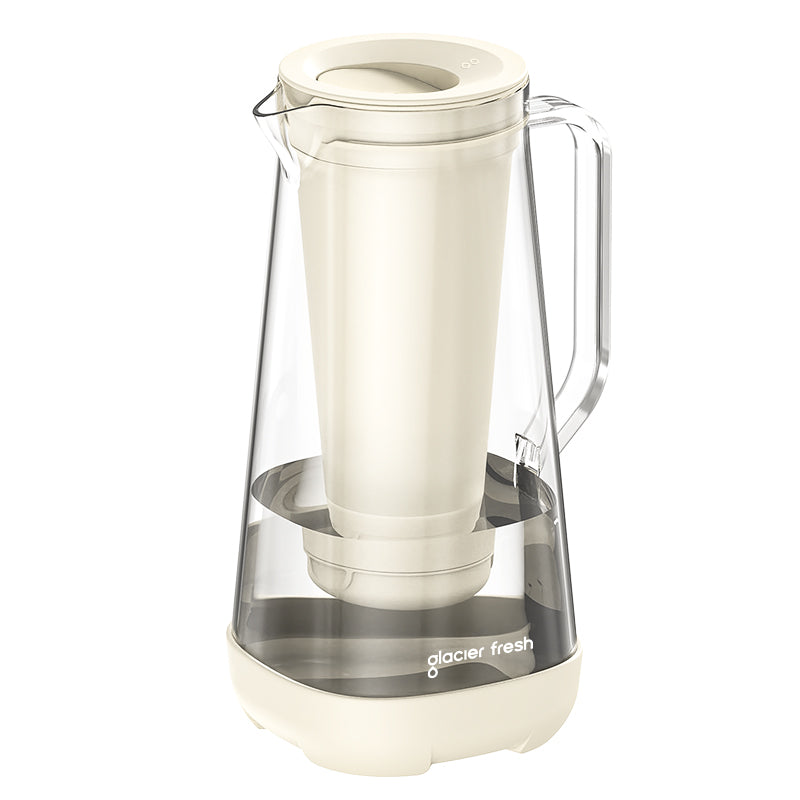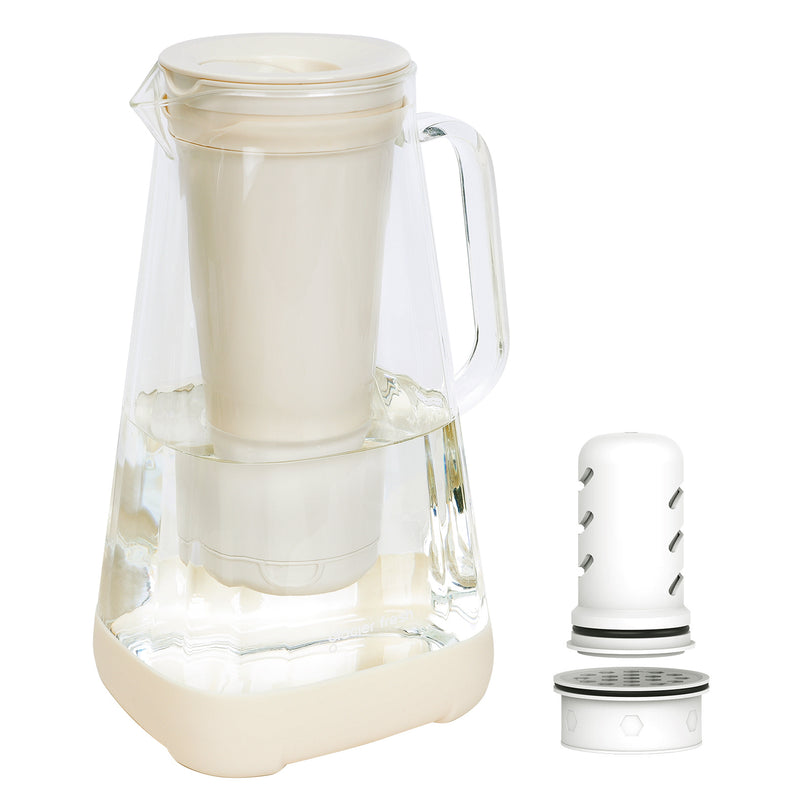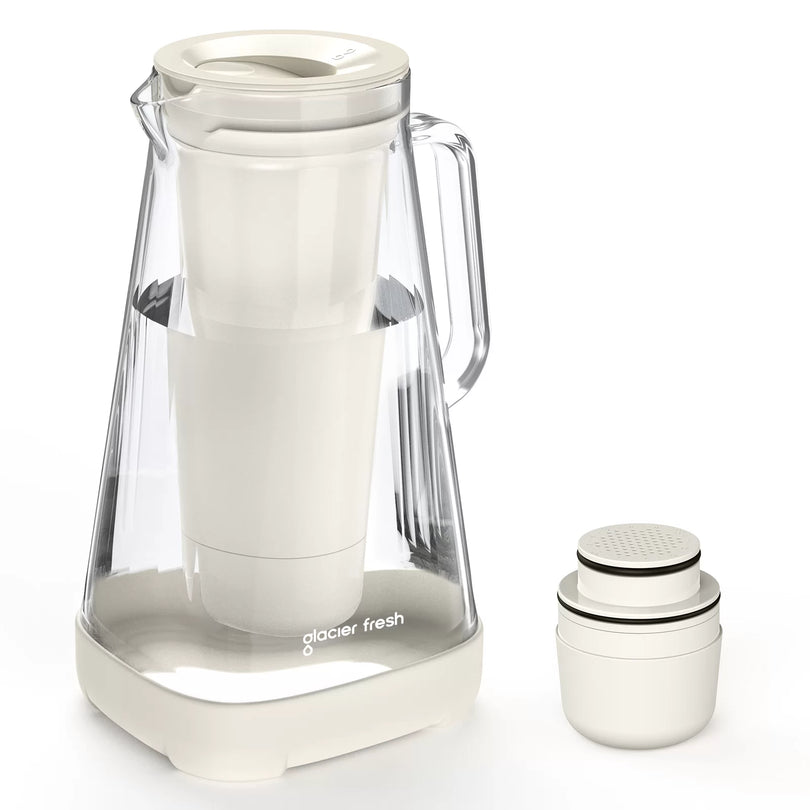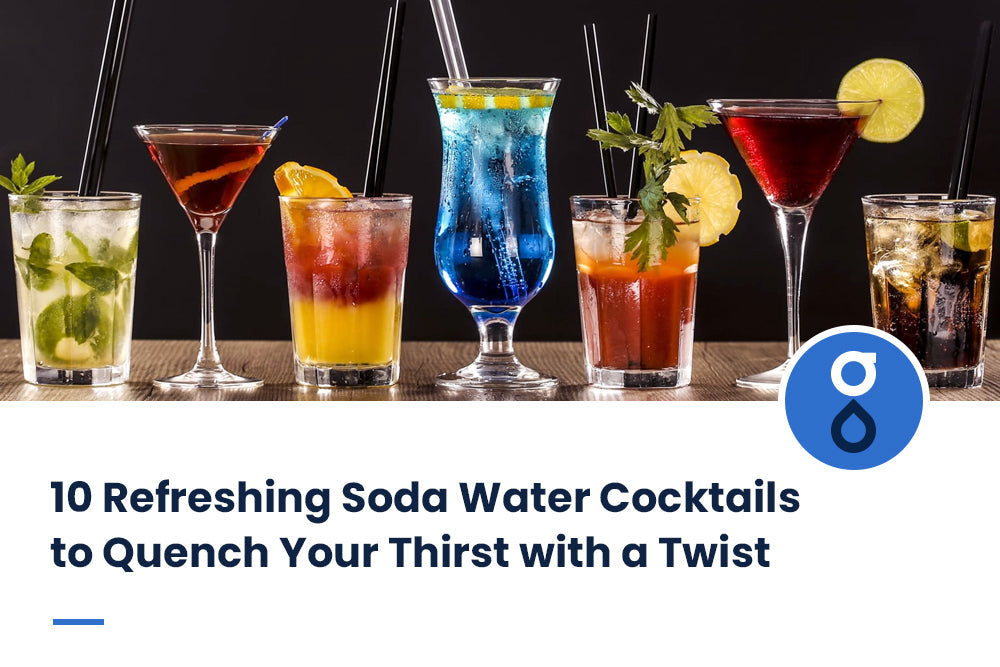Table of Contents:
Alles, was Sie über POU wissen müssen
Wie funktioniert POU?
Arten von POU-Wasseraufbereitungssystemen
Die Vor- und Nachteile von POU
POU VS POE, was sind die Unterschiede
Überlegungen zur Auswahl eines POU-Systems
FAQs
Abschluss
Haben Sie sich schon einmal gefragt, was wirklich in Ihrem Trinkwasser steckt? Mit der richtigen Wasseraufbereitungsanlage könnten Sie Chlor, Blei und andere schädliche Verunreinigungen trinken. Point-of-Use-Wasseraufbereitungssysteme (POU) könnten die Lösung sein. Diese Systeme liefern Ihnen sauberes, sicheres Trinkwasser, dem Sie vertrauen können.
Stellen Sie sich vor, Sie hätten Zugang zu einem Wasserfiltersystem, das so klein wie ein Krug ist, Ihnen aber sauberes, reines Trinkwasser liefert. Mit POU-Systemen ist genau das möglich. Diese Systeme sind so konzipiert, dass sie überall sicheres Trinkwasser liefern. Sie sind einfach zu bedienen, kostengünstig und geben Ihnen ein beruhigendes Gefühl. Was sind POU-Systeme und wie funktionieren sie? Lesen Sie weiter und erfahren Sie es!
Alles, was Sie über POU wissen müssen

Um fundierte Entscheidungen treffen zu können, müssen Sie alle wichtigen Informationen zu POUs kennen. POU steht für Point of Use, eine Art Wasserfiltersystem. Diese Systeme erfreuen sich aufgrund ihrer effektiven Schadstoffentfernung und der geringeren Installations- und Wartungskosten zunehmender Beliebtheit.
Bei der Anschaffung eines POU-Systems sollten Sie die Umweltauswirkungen, die Installationskosten, den Wartungsaufwand und die gesundheitlichen Vorteile berücksichtigen. POU-Systeme gibt es in verschiedenen Formen und Größen und verfügen jeweils über unterschiedliche Filterstufen. Die Installationskosten variieren je nach Größe und Anzahl der gewählten Filter. Neben den Installationskosten sollten Sie auch die Kosten für Strom und Ersatzfilter berücksichtigen.
Der Wartungsaufwand variiert je nach Art des installierten POU-Systems, umfasst aber in der Regel einen Filterwechsel alle 3–6 Monate. Die Umweltbelastung von POU-Systemen ist im Vergleich zu anderen Wasserfiltersystemen relativ gering. Sie sind für den Einsatz in Privathaushalten konzipiert und verbrauchen daher weniger Energie und Ressourcen als kommerzielle Systeme.
Darüber hinaus können POU-Systeme dazu beitragen, den Plastikflaschenmüll zu reduzieren, da gefiltertes Wasser aus dem Wasserhahn verfügbar ist. Da POU-Systeme die meisten Verunreinigungen entfernen, hat das Trinken von sauberem Wasser zahlreiche gesundheitliche Vorteile.
Wie funktioniert POU?
Ein POU-System besteht typischerweise aus mehreren Stufen zur Wasserreinigung. Die erste Stufe ist die Filtration, die größere Partikel wie Rost, Sand und Sedimente entfernt. Anschließend wird das Wasser einer Sedimentation unterzogen, bei der sich kleinere Partikel am Boden absetzen. Abschließend erfolgt die Desinfektion durch chemische Desinfektionsmittel oder ultraviolette (UV-)Strahlung.

Je nach Bedarf kommen verschiedene Arten von POU-Systemen zum Einsatz. Aktivkohlefilter werden beispielsweise zur Entfernung von Chlor, Pestiziden und anderen organischen Verbindungen eingesetzt. Umkehrosmoseanlagen sind auf die Entfernung gelöster Feststoffe wie Fluorid, Blei und Arsen ausgelegt, während die UV-Desinfektion Bakterien und Viren wirksam eliminiert.
Zu den zusätzlichen Funktionen eines POU-Systems können Ionenaustauscherharze gehören, die Mineralien entfernen, die das Wasser härten können. Einige Systeme nutzen fortschrittliche Oxidationsverfahren und katalytische Kohlefilter, die eine zusätzliche Desinfektion und Entfernung organischer Verunreinigungen ermöglichen. Die Art des verwendeten Systems hängt von den spezifischen Bedürfnissen des Einzelnen oder des Haushalts ab.
Arten von POU-Wasseraufbereitungssystemen
1. Umkehrosmosesysteme (RO) für die Arbeitsplatte
Auftisch-RO-Systeme gehören zu den beliebtesten POU-Wasseraufbereitungssystemen. Mithilfe von Umkehrosmose entfernen sie Verunreinigungen wie Blei, Chlor, Fluorid und Bakterien aus dem Wasser. Diese Systeme werden mit einem separaten Wasserhahn geliefert, der auf der Arbeitsplatte installiert werden kann. Ein Auftisch-RO-System ist einfach zu installieren, erfordert nur minimale Wartung und liefert wohlschmeckendes Wasser. Diese Systeme sind jedoch in der Regel teuer und produzieren Abwasser.
2. Untertischfilter

Umkehrosmoseanlage unter der Spüle sind POU-Wasseraufbereitungssysteme, die unter der Spüle installiert werden. Das System filtert das Wasser aus der Kaltwasserleitung und gibt sauberes Wasser über einen separaten Wasserhahn aus. Untertischfilter gibt es in verschiedenen Ausführungen, darunter Aktivkohle-, Keramik- und Umkehrosmosefilter. Sie sind einfach zu installieren und zu warten und können eine Vielzahl von Verunreinigungen effektiv entfernen.
3. Am Wasserhahn montierte Filter
Wasserhahnfilter sind POU-Wasseraufbereitungssysteme, die am Wasserhahn befestigt werden. Sie gehören zu den günstigsten Wasseraufbereitungsoptionen für Hausbesitzer und sind einfach zu installieren und auszutauschen. Die meisten Modelle verfügen über einen Schalter, mit dem zwischen gefiltertem und ungefiltertem Wasser umgeschaltet werden kann. Wasserhahnfilter eignen sich am besten zum Entfernen von Chlor, Sedimenten und anderen Verunreinigungen, haben jedoch nur eine begrenzte Kapazität und Fähigkeit, Schadstoffe zu entfernen.
4. Kannenfilter
Glas-Wasserfilterkrüge sind POU-Wasseraufbereitungssysteme, die ideal für Menschen sind, die ihr Wasser gerne mit sich herumtragen. Diese Systeme filtern mehrere Tassen Wasser auf einmal und sind relativ günstig. Krugfilter verwenden typischerweise Aktivkohle, um Verunreinigungen aus dem Wasser zu entfernen.
5. Brennereien
Destilliergeräte sind POU-Wasseraufbereitungssysteme, die Wasser durch Wärme in Dampf umwandeln, der anschließend gesammelt, gekühlt und gefiltert wird. Destilliergeräte entfernen effektiv Verunreinigungen wie Blei, Bakterien und Viren und sind daher die ideale Lösung für Menschen, die auf sauberes Wasser angewiesen sind. Destilliergeräte sind effektiv, aber auch teuer, zeitaufwändig und erfordern regelmäßige Wartung.
Die Vor- und Nachteile von POU
Sie fragen sich vielleicht, welche Vor- und Nachteile POU-Systeme haben.
Zu den Vorteilen von POU-Systemen zählen eine verbesserte Wasserqualität, Komfort und potenzielle Kosteneinsparungen. Die Aufrechterhaltung und Kontrolle der Wasserqualität ist mit einem POU-System einfacher als mit anderen Wasseraufbereitungssystemen. Darüber hinaus wirkt es sich positiv auf die Umwelt aus und kann der Gesundheit zugutekommen. Darüber hinaus können POU-Systeme in bestimmten Szenarien kostengünstig sein.
Es gibt jedoch auch einige Nachteile. Um die einwandfreie Funktion des Filters zu gewährleisten, ist regelmäßige Wartung erforderlich. Wird der Filter nicht regelmäßig gewechselt, kann es passieren, dass Wasser am Filter vorbeifließt, was letztendlich zu einer Verschlechterung der Wasserqualität führt. Darüber hinaus können POU-Systeme je nach Art, Größe und Ausführung des Systems teuer sein.
Insgesamt haben POU-Systeme sowohl Vor- als auch Nachteile. Diese zu verstehen ist wichtig, bevor Sie entscheiden, ob ein POU-System die richtige Wahl für Sie ist. Die Berücksichtigung von Wartungsaufwand, Wasserqualitätskontrolle, Umweltauswirkungen, gesundheitlichen Vorteilen und Kosteneffizienz kann Ihnen helfen, die beste Entscheidung zu treffen.
POU VS POE, was sind die Unterschiede?

Der Vergleich von POU und POE kann wie die Betrachtung zweier Seiten einer Medaille sein – beide haben ihre eigenen Vor- und Nachteile. Um die Unterschiede zu verstehen, ist es wichtig, die folgenden Punkte zu berücksichtigen:
1. Kostenvergleich: POU-Systeme sind in der Regel günstiger zu installieren und zu warten als POE-Systeme.
2. Installationsprozess: Die Installation eines POU-Systems ist normalerweise einfacher und schneller als die Installation eines POE-Systems.
3. Wasserqualität: POU-Systeme liefern tendenziell Wasser von höherer Qualität als POE-Systeme.
4. Wartungsanforderungen: POU-Systeme erfordern weniger Wartung als POE-Systeme.
Hinsichtlich der Nachhaltigkeit sind POE-Systeme im Vorteil, da sie weniger Ressourcen verbrauchen. POU-Systeme bieten jedoch mehr Komfort, da sie in Bereichen eingesetzt werden können, in denen ein POE-System praktischer wäre. In Bezug auf die Energieeffizienz sind POU-Systeme in der Regel effizienter als POE-Systeme.
Insgesamt haben sowohl POU- als auch POE-Systeme ihre individuellen Vor- und Nachteile. Bei der Entscheidung für ein System ist es wichtig, die spezifischen Bedürfnisse des Benutzers zu berücksichtigen. Letztendlich hängt die beste Methode für jede Situation vom Budget, den Bedürfnissen und den Vorlieben des Benutzers ab.
Überlegungen zur Auswahl eines POU-Systems
Effizienzklassen
Die Überprüfung der Effizienzbewertungen kann Ihnen Zeit und Geld sparen! POU-Systeme (Point of Use) sind beliebt, da sie Verunreinigungen herausfiltern und die Wasseraufbereitungsstandards einhalten. Bei der Auswahl eines POU-Systems ist es wichtig, die Filtertechnologien, Wassersicherheitsmaßnahmen und den Wasserverschmutzungsgrad zu berücksichtigen.
Effizienzbewertungen geben Ihnen einen Eindruck von den Auswirkungen auf Ihre Umgebung, den Wartungskosten und dem Energieverbrauch des Prozesses. Bei der Beurteilung der Effizienz eines POU-Systems sollten Sie drei Dinge beachten:
1. Die Anzahl der Gallonen Wasser, die pro Stunde gefiltert werden.
2. Die während des Prozesses verschwendete Wassermenge.
3. Die Kosten des Filters und die Gesamtbetriebskosten.
Wenn Sie sich die Zeit nehmen, die Effizienzbewertungen zu verstehen, können Sie sicherstellen, dass das von Ihnen gewählte POU-System Ihren Anforderungen entspricht und kostengünstig ist.
Installationskosten

Bei der Wahl eines POU-Systems ist es wichtig, die Installationskosten zu kennen. Die durchschnittlichen Installationskosten liegen zwischen 500 und 2.500 US-Dollar. Auch wenn die Kosten zunächst teuer erscheinen, ist es wichtig, die Installationskosten mit den langfristigen Einsparungen und der verbesserten Wasserqualität des POU-Systems zu vergleichen.
Darüber hinaus ist die Installationszeit minimal und dauert in der Regel nur wenige Stunden. Die Preise für Installationsleistungen können je nach Komplexität des Systems variieren. Ein Kostenvergleich verschiedener Anbieter kann Ihnen jedoch helfen, das beste Angebot für Ihre Bedürfnisse zu finden. Unter Berücksichtigung all dieser Faktoren kann die Investition in ein POU-System die Wasserqualität deutlich verbessern und langfristig Kosten sparen.
Wartungsanforderungen
Die Wartung eines POU-Systems ist entscheidend für dessen Langlebigkeit und optimale Leistung. Der Aufwand ist gering, regelmäßige Wartungen sind jedoch unerlässlich. Die meisten POU-Systeme erfordern einen regelmäßigen Filterwechsel, um eine maximale Wasserfiltration, Chlorentfernung und Sedimentreduzierung zu gewährleisten. Die Kosten für den Austausch dieser Filter sind im Vergleich zu anderen Wasserfiltersystemen in der Regel günstig, sodass sie für viele Haushalte eine kostengünstige Option darstellen.
Darüber hinaus sind die gesundheitlichen Vorteile von POU-Systemen bekannt. Ihre Filter sind darauf ausgelegt, bestimmte Verunreinigungen im Trinkwasser zu reduzieren. Regelmäßige Wartung Ihres POU-Systems trägt dazu bei, diese gesundheitlichen Vorteile zu nutzen.
Kundenbewertungen
Produktbewertungen helfen Ihnen dabei, das für Sie passende POU-System zu finden. Achten Sie bei der Bewertung auf Kosteneffizienz, Umweltverträglichkeit, einfache Bedienung und Filterwechsel. Auch die Wassersicherheit des POU-Systems ist wichtig.
Wenn Sie Produktbewertungen gut verstehen, können Sie sicher sein, die richtige Wahl für Ihre Bedürfnisse zu treffen. Ein weiterer wichtiger Faktor bei der Betrachtung von Produktbewertungen für POU-Systeme ist der Kundenservice. Qualitativ hochwertiger Kundenservice kann zwischen einem zufriedenstellenden Kauf und einem stressigen Erlebnis unterscheiden.
Es ist wichtig, Bewertungen anderer Kunden zu lesen, um einen Eindruck davon zu bekommen, wie das Unternehmen mit Kundenbeschwerden und Rücksendungen umgeht. So können Sie eine fundierte Entscheidung treffen und sicher sein, dass Ihr POU-System optimal zu Ihren Anforderungen passt. Bei der Auswahl eines POU-Systems ist es wichtig, alle oben genannten Faktoren zu berücksichtigen.
FAQs
Wie lange halten POU-Wasseraufbereitungssysteme?
Mit einem POU-Wasseraufbereitungssystem können Sie jahrelang sauberes, sicheres Trinkwasser genießen. Die Wartung eines POU-Systems ist relativ einfach und die Qualität des produzierten Wassers ist im Allgemeinen höher als die von unbehandeltem Wasser.
Die Installationskosten sind im Vergleich zur Filterleistung minimal, und auch der Energieverbrauch ist minimal. POU-Systeme filtern Schadstoffe hocheffizient heraus und können bei richtiger Wartung bis zu 10 Jahre halten, bevor sie ausgetauscht werden müssen.
Wie schneiden POU-Wasseraufbereitungssysteme im Vergleich zu anderen Wasseraufbereitungssystemen ab?
Vergleicht man POU-Systeme mit anderen Wasseraufbereitungssystemen, stellt man fest, dass sie kostengünstiger und energieeffizienter sind und dennoch hochwertiges, sicheres Trinkwasser liefern. Hier sind einige Vorteile, die beim Vergleich von POU-Systemen mit anderen Wasseraufbereitungssystemen zu berücksichtigen sind:
· Kostengünstig
· Umweltfreundlich
· Minimaler Wartungsaufwand
· Einfacher Installationsprozess
· Hohe Wasserqualität
Müssen POU-Wasseraufbereitungssysteme professionell installiert werden?
Die Installation eines POU-Systems ist oft unkompliziert, sodass Sie nicht unbedingt professionelle Hilfe benötigen, um es betriebsbereit zu machen. Für viele Anwender ist es kostengünstiger, ein POU-System mit ein paar einfachen Werkzeugen und einigen grundlegenden Anweisungen selbst zu installieren.
Darüber hinaus ist der Wartungsaufwand eines POU-Systems minimal. Nur gelegentliche Filterwechsel sind erforderlich, sodass die Selbstinstallation relativ einfach und effizient ist. Wenn Sie ein POU-System selbst installieren, stellen Sie sicher, dass es korrekt und mit minimaler Umweltbelastung installiert wird.
Abschluss
Ihre Reise mit POU ist vorbei – ernten Sie die Früchte Ihrer harten Arbeit. Mit der Wahl eines POU-Wasseraufbereitungssystems sichern Sie sich dank des effizienten Filtersystems Wasser höchster Qualität. Sie haben außerdem alle Sicherheitsprotokolle eingehalten und die Wartung regelmäßig durchgeführt, was zu einer kostengünstigen und langlebigen Lösung führt. Die Sicherheit, die ein POU-System bietet, ist unbezahlbar. Zu wissen, dass Sie und Ihre Familie sauberes, sicheres Wasser trinken, ist ein großartiges Gefühl.
Sie sparen langfristig Geld, da Sie teure Reparaturen oder Systemaustausch vermeiden. Mit der Investition in ein POU-Wasseraufbereitungssystem haben Sie eine kluge Entscheidung getroffen. Sie erzielen optimale Ergebnisse in Bezug auf Qualität, Sicherheit und Kosteneffizienz. Mit diesem System können Sie sicher sein, dass Sie das sauberste Wasser trinken, das es gibt. Herzlichen Glückwunsch zu Ihrem erfolgreichen POU-Erlebnis.

